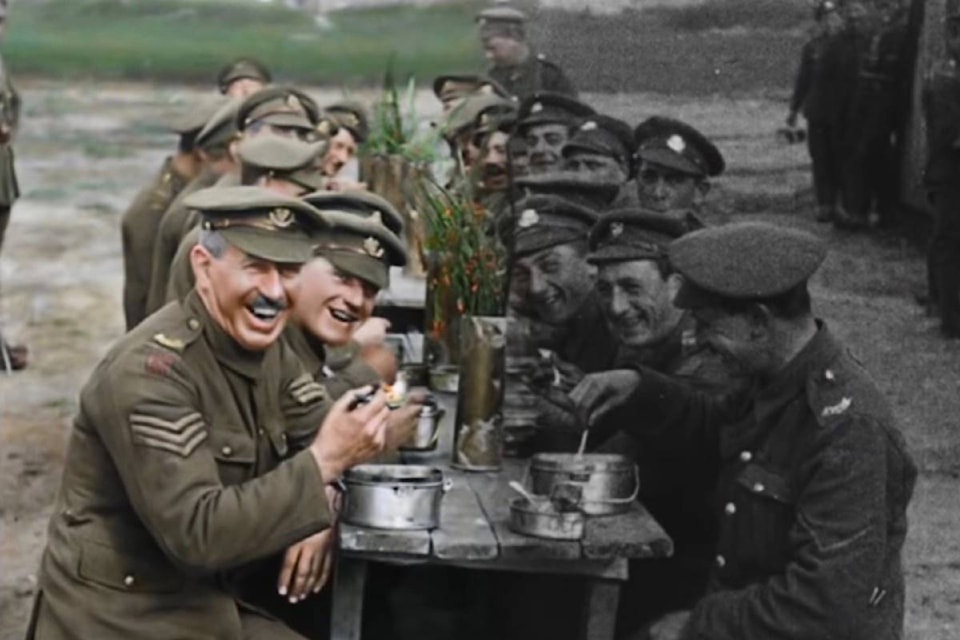A story in the Globe and Mail this week described how a nameless Canadian soldier who had been buried at a war cemetery in the Netherlands during World War II had been identified and his family informed about where he was interred.
Trooper Henry George Johnston was killed during Operation Blackcock in the Netherlands in January 1945, and was buried as an unknown soldier. His headstone noted only his date of death and the fact that he was Canadian. Researchers with National Defence Canada’s Casualty Identification Program started with those facts, then used historical documents to narrow down the search and ultimately give him a name. Johnston is the second Canadian soldier identified under the program this year, and one of 31 Canadian soldiers, previously unknown, whose remains have been identified since the program started in 2007.
You might wonder why this is important. Beyond the fact that it provides families with knowledge — denied them for years — of where their kin are buried, and a concrete place to grieve and remember, it brings these unidentified soldiers back to life. “It’s amazing how knowing who he was and seeing his picture gives him his humanity back,” wrote one commenter on the story, and it’s true. Johnston is no longer an “unknown soldier”; his picture shows a dark-eyed, thoughtful man gazing at us across 75 years.
The story made me think of a documentary I saw at the Paramount Theatre in Kamloops last year. They Shall Not Grow Old was made by Academy Award-winning director Peter Jackson, who was given access to more than 100 hours of black-and-white, silent footage from World War I in the archives of the Imperial War Museum, London. He also had hundreds of hours of audio recollections by WW I vets, and from this material he crafted an extraordinary film.
It is told entirely in the words and voices of those now long-dead soldiers, and their stories play out over jerky, grainy, silent footage that takes us from the pre-war summer of 1914 through joining up, training, and shipping off to France. Up to that point the black-and-white images possess that slightly distancing effect that silent film has on us. It is a recognizable world, but not a familiar one, quiet and grey as it is.
Then, at about the 20 minute mark, something astonishing happens. The image spreads to widescreen format, and as it does so gradually turns from black-and-white to colour. The jerky movements are smoothed out, and we see the men marching to the front line 100 years ago as if they were filmed yesterday.
Even more extraordinarily, we hear them: the low hum of conversation, the whinnying of horses, the creaking of wagons as they churn through the mud. A man turns and looks at the camera, and we hear him say “We’re on film!” Jackson used lip readers to identify what the men were saying, and researchers to identify what regiment they were from, then had actors with the appropriate accents/dialects record their words. Not only do we see them: they speak to us — literally — across more than a century.
Just like Trooper Johnston, at a stroke the soldiers go from remote, almost ghostly figures to real, flesh-and-blood people, laughing, joking, talking. They are, suddenly and vividly, the men from John McCrae’s “In Flanders Fields”: “Short days ago we lived, felt dawn, saw sunset glow / Loved and were loved.”
It is the most moving thing I have seen for some time, and as I watched and listened to the men it brought them, and the war they fought in, to life in a way that I had never experienced. Their story is well worth searching out (it is back at the Paramount on Nov. 7 and 11), watching, and remembering, along with the story of Henry Johnston and the many other men and women who served, some of whom paid the ultimate price so that we would know freedom.
editorial@accjournal.ca
Like us on Facebook and follow us on Twitter
